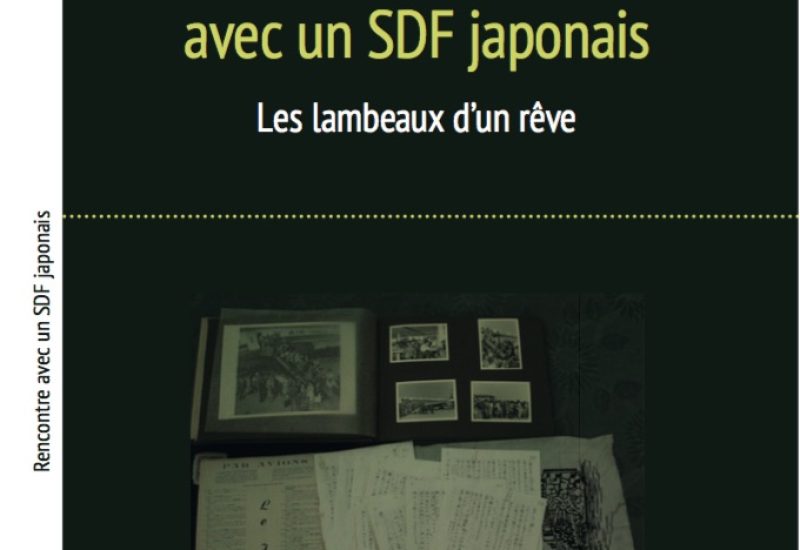Alain Roussillon, Identité et Modernité – Les voyageurs égyptiens au Japon (XIX°-XX° siècle), 249 p. Paris: Actes Sud (Sindbad), 2005. ISBN: 2-7427-5443-1, 28 euros.
The book, Identité et modernité, les voyageurs égyptiens au Japon, written by the French scholar Alain Roussillon, focuses on Arab- Japanese relations, on the influence that Japan has had on Egyptian travelers during the late nineteenth century, and on the message these travelers have conveyed in the books they wrote about their experiences. Roussillon undertakes a detailed examination of Egyptian writings on Japan from the late nineteenth century on. He shows the ways in which many of these writers considered how Japan was able to successfully resist European incursions and achieve harmonious modernization and development, while Egypt failed to do so.
Roussillon presents valuable research on several early twentieth-century Egyptian travelers to Japan, such as Ali Ahmed al-Jirjawi and Ahmed Fadli, describing the nature of their interest in the country and the ways in which they perceived and presented it to Egyptian and Arab readers. For example, Jirjawi, who considered himself the first Egyptian to set foot in the region since antiquity, saw Japan’s success in defeating Russia in the 1905 Russo-Japanese war as enough to pique the interest of all those non-Europeans who felt threatened by European policies and depredations. The Japanese defeat of Russia was rendered even more important by the fact that Russia, one of the European powers of the time, was considered an historical enemy of the Ottoman Empire, to which Egypt and the Arab world still largely belonged. Jirjawi, a follower of Muslim reformers such as Jamal al-Afghani and Mohamed Abdu, was also a pan- Islamist and a supporter of the Ottoman Empire. As such, he raised the possibility of Japan’s conversion to Islam, thus contributing to Turkish geographical dominance across South to East Asia, placing the Japanese in a single, Muslim civilization.
Roussillon considers in his book other Egyptian travelers to Japan. These include Prince Mohamed Ali Pasha, brother of the Khedive Abbas Hilmi II. Ali Pasha visited Japan in 1909 and the next year published a book recording the details of his visit, under the title “Al-Rihla al-yâbâniyya” (Japanese Journey). For the prince, whom Roussillon describes as a first-class traveler, Japan was a country of ethnographic interest, though he also dwelled on Japanese military strength and the role that the country might be expected to play in Asia as a colonizing power.
Roussillon also deals with the work of Mohamed Thabit, author of travel books to Europe, Central Asia, Africa and Australia, among other places. In 1931, Thabit published an account of his Asian journey, under the title “Jawla fi rubâ’ asyâ bayn misr wa al-yâbân” (Journey in the Lands of Asia, Egypt and Japan). Thabit’s interest in Japan was explicitly focused on the country’s successful modernization and development, from which he thought lessons might be drawn. He wrote, according to Roussillon, from both the “oriental and Egyptian point of view”, so that his readers might draw lessons “from what I have seen concerning their awakening or their stagnation, in the hope that we could draw inspiration from their recipes”. He goes on to ask his Arabic audience to “take into account the defeats that [the Japanese] have suffered, so that we (ourselves) may be on guard against the difficulties that threaten nations at the dawn of their awakening and at different stages of their development”.
As Roussillon shows, Thabit’s interests in Japan went far beyond that of Jirjawi, who was mostly concerned with combating Christian evangelism in Asia by trying to convert the country to Islam. Thabit also went beyond Prince Mohamed Ali Pasha, who only knew Japan superficially and who focused mainly on the country’s military prowess. Instead, Thabit approached the questions central to Roussillon’s study: how successful could a nation be in modernizing itself while remaining culturally intact? How could a nation introduce foreign ideas and expertise without undermining native independence or distorting local development?
For Roussillon, all the Egyptian writers he considered had no doubts about the need for such a modernization, while also considering Europe’s role in providing modern ideas as central. The point was to analyze Egypt’s own unique development, in the aftermath of the changes introduced by Mohamed Ali, the initial success the country enjoyed, and the way it eventually ended up under European administration and influence. Which begs the question whether Egypt put its modernization in the hands of a colonial power, unlike Japan, which had apparently managed to develop without mortgaging its future to international finance; retained its independence; and remained fully itself, only paying the price of a short period of political and social unrest. Roussillon succeeds in demonstrating the meaning of the Japanese example for the Egyptian travelers and writers he considers. He insists particularly on the consequences of bad management by Egypt’s rulers, and how devastating it was. The results became evident with the humiliation of foreign control on finance on one hand, and the long-term distortion of the Egyptian society on the other. This distortion led to an acknowledgment of a split between modern sectors, influenced by foreign ideas, and “traditional” ones, supporting a different conception of the self. Traditionalism in Egypt also promoted a rejection as “modern” of every innovation inspired by a foreign country. According to Roussillon, Japan seemed to have avoided such contradictions and distortions.
Roussillon also analyses the writings of Mustapha Kamil, one of the most important Egyptian nationalists of the early twentieth century, and author of “Al-shams al-Mushrika” (Rising Sun), published in 1904; and Ahmed Fadli, author of the “Kitab Sirr taqaddum al-yâbân” (The Secret of Japanese Progress, 1911). Fadli lived in Tokyo, married a Japanese woman, and was fascinated by the Japanese model without ever visiting the country [MP: HOW COULD HE HAVE LIVED IN TOKYO & NEVER VISITED THE COUNTRY?]. Both authors were interested in Japan’s successful passage to modernity, particularly in the country’s national consciousness. They saw in the development of national consciousness a consequence of modernity [CIRCULAR STATEMENT].
According to Kamil, the cultural features of Japanese society were worthy enough to be imitated by Egyptians. Whereas both Egyptians and Japanese were fascinated by Europe and attracted to what they could learn from Europeans, and though both were equal in intellect, Egypt’s advancement was limited compared to that of Japan. The reasons, Kamil felt, were many, though an unwieldy bureaucracy and passive attitudes in the face of modern ideas were important factors in postponing Egypt’s development. In Japan, by contrast, the elites who were responsible for the country’s development, were seemingly motivated by a strong nationalist attitude that led them to “voluntarily” transfer their privileges into the hands of the Emperor during the Meiji era, helping to end feudalism there. For Kamil, Japanese officials showed great differences compared to Egyptians. The Japanese had “advanced their country to the front rank of states and kingdoms”, while the Egyptians have “done nothing”. The greatest difference, he concluded, was probably the self- confidence Japanese had, a result of their having been able to resist European control and to manage their own development.
In the final section of his book, Roussillon goes beyond his turn-of-the-century travelers to consider the writings of other contemporary and modern-day Egyptians on Japan. These include such well-known figures such as Anouar Abdel-Malek and Nasr Hâmid Abû Zaid, both of whom commented on Japan’s post-1945 reconstruction and pointed to the role played by Americans, comparing it to European influence during Japan’s Meiji era and later. Roussillon adds an insert by Abu Zaid on the possible adaptation of Japanese tradition and modernity in Egypt. Zaid describes how Japanese citizens use the most modern and complicated technology while still dressing in kimonos, sitting on tatamis and using futons to sleep on the floor. But Roussillon seems to be skeptical about how authentic this ideal image of Japan really is. He believes that change has brought about those images in the public sphere, and he stresses that for the Japanese the production of ultra modern technology has no relation whatsoever with the social self-image or status that they have shown throughout their history.
Bassam TAYARA
INALCO and Université Cergy-Pontoise




